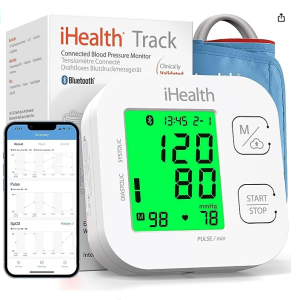Introduction
Imagine a world where you hold the key to improving your blood pressure and, by extension, your overall health. This journey begins with exercise, a powerful tool that can significantly impact your blood pressure levels. Let us embark on this transformative exploration, delving into the remarkable connection between exercise and blood pressure.
A Personal Journey
I want to start by sharing a personal story that resonates with many of us. A close friend of mine, Sarah, was diagnosed with high blood pressure a few years ago. She felt overwhelmed and uncertain about how to manage this condition. However, with determination and a commitment to her well-being, Sarah embraced regular exercise as a vital part of her life.
Through consistent aerobic workouts and strength training, Sarah managed to lower her blood pressure and found herself more energetic, focused, and healthier overall. Her journey inspired me to delve deeper into the profound effects of exercise on blood pressure, and I am excited to share these insights with you.
Exercise and Blood Pressure: The Science Behind It
Exercise wields a transformative power over blood pressure, affecting it in multiple ways:
- Heart Health: Exercise strengthens the heart, enabling it to pump blood more efficiently. This reduced workload on the arteries leads to lower blood pressure.
- Enhanced Vascular Function: Physical activity enhances the flexibility of blood vessels, facilitating smoother blood flow and lowering blood pressure.
- Stress Reduction: Exercise reduces the release of stress hormones, which can otherwise elevate blood pressure levels.
- Improved Circulation: Exercise enhances blood circulation, ensuring your tissues receive oxygen and nutrients while eliminating waste products.
- Weight Management: Maintaining a healthy weight is crucial for blood pressure regulation. Exercise helps shed excess pounds, alleviating strain on the heart and arteries.
Types of Exercises to Lower Blood Pressure
Now, let us explore the types of exercises that can work wonders for your blood pressure:
Aerobic Exercises
Aerobic exercises, also known as cardio workouts, are particularly effective in lowering blood pressure. These activities elevate your heart rate and enhance circulation. Examples include:
- Brisk walking
- Running
- Biking
- Swimming
- Dancing
- Hiking
- Tennis
Strength Training
Strength training, or resistance exercises, focuses on building muscle strength. Strong muscles reduce the workload on your heart and contribute to lower blood pressure. Consider incorporating these exercises:
- Lifting weights
- Utilizing resistance bands
- Performing bodyweight exercises like push-ups and sit-ups
Discover the iHealth Track Smart Blood Pressure Monitor:
🩺 Clinically Accurate & Easy to Use
🌈 Large Multi-Color Display
📊 Smartphone Integration
❤️ Heart Rhythm Alerts
📦 Complete Package & Warranty
🌟 Take charge of your health now! Order today for better blood pressure. Act fast, your well-being is priceless! 🌟

Amazon
How Much Exercise Do You Need?
The American Heart Association recommends 150 minutes of moderate-intensity aerobic exercise or 75 minutes of vigorous-intensity aerobic exercise per week for adults. Strength training exercises targeting major muscle groups should also be performed two or more days weekly.
If you’re new to exercise, start gradually and consult your doctor before beginning any new fitness regimen. Safety and sustainability should always be the priority.
Sustaining Your Exercise Routine
Embarking on an exercise journey is commendable, but sustaining it is the key to long-term success. Here are some valuable tips to help you stay on track:
- Find Enjoyment: Choose activities you genuinely enjoy. The more you relish your workouts, the more likely you will stick with them.
- Set Realistic Goals: Begin slowly and increase exercise duration and intensity gradually. Unrealistic expectations can lead to burnout or injuries.
- Schedule Exercise: Prioritize exercise by scheduling it into your daily routine, treating it as a non-negotiable commitment.
- Partner Up: Find a workout buddy or enlist the support of a friend or family member. Exercising with others can boost motivation and accountability.
- Rewards and Self-Care: Reward yourself for achieving milestones in your exercise journey. Take time for self-care, whether indulging in a favorite book or enjoying a relaxing evening after a workout.
Conclusion
Exercise is not merely a means to an end; it is a transformative journey that can enhance your health and lower your blood pressure. If you have yet to embark on this path, consider taking the first step. Moreover, if you are already on this journey, keep moving forward, knowing that you hold the key to a healthier and more vibrant life.
By personalizing our exploration, offering insights into the science behind exercise, and providing practical tips for success, I hope this article inspires you to embrace exercise as a lifelong companion on your quest for optimal health. Together, let us transform our lives, one step, one workout at a time.
Get in on the action and tune in to the Army Gymnastics Podcast today! Please find us on your favorite platforms, including Spotify, Apple, Google, Pandora, and Amazon Music. Don’t miss out on the latest and greatest from Army Gymnastics – start listening today on Spotify





